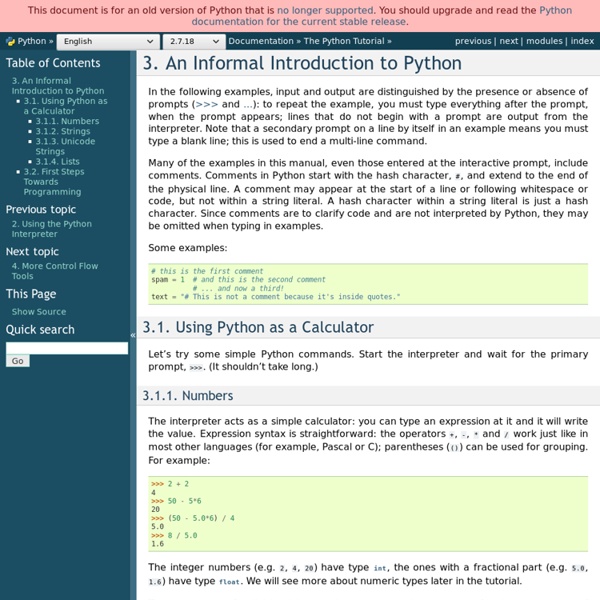3. An Informal Introduction to Python — Python v2.7.2 documentation

PEP 8 -- Style Guide for Python Code
Code should be written in a way that does not disadvantage other implementations of Python (PyPy, Jython, IronPython, Cython, Psyco, and such).For example, do not rely on CPython's efficient implementation of in-place string concatenation for statements in the form a += b or a = a + b. This optimization is fragile even in CPython (it only works for some types) and isn't present at all in implementations that don't use refcounting. In performance sensitive parts of the library, the ''.join() form should be used instead.
6. Built-in Exceptions — Python v3.1.3 documentation
In Python, all exceptions must be instances of a class that derives from BaseException. In a try statement with an except clause that mentions a particular class, that clause also handles any exception classes derived from that class (but not exception classes from which it is derived). Two exception classes that are not related via subclassing are never equivalent, even if they have the same name. The built-in exceptions listed below can be generated by the interpreter or built-in functions. Except where mentioned, they have an “associated value” indicating the detailed cause of the error. This may be a string or a tuple containing several items of information (e.g., an error code and a string explaining the code). User code can raise built-in exceptions. The built-in exception classes can be sub-classed to define new exceptions; programmers are encouraged to at least derive new exceptions from the Exception class and not BaseException. exception BaseException exception Exception
Related:
Related:



